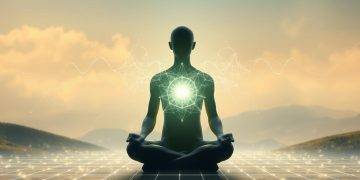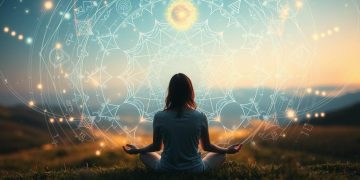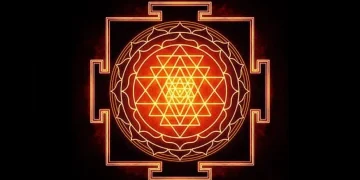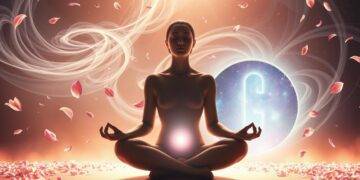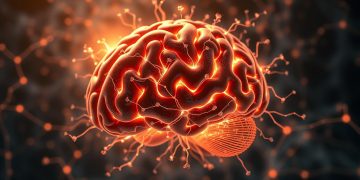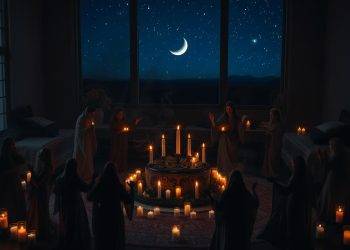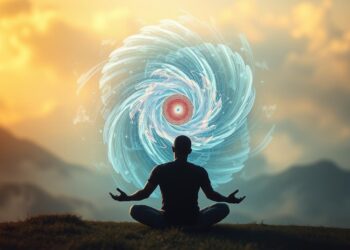“Until you make the unconscious conscious, it will direct your life – and you will call it fate.” Carl Jung’s timeless words reveal why understanding hidden patterns in our minds matters. Beneath your daily thoughts lies a deeper layer of identity – universal symbols that silently guide your choices, fears, and dreams.
These ancient templates – rooted in myths and stories across civilizations – form what psychologists call the collective unconscious. They act as mental blueprints, shaping how we see ourselves and others. From heroic quests to nurturing caregivers, these patterns repeat in art, religion, and even modern branding.
This guide unlocks how these timeless symbols influence your personality and decisions. You’ll discover their origins in Greek philosophy, their role in decoding the human psyche, and practical ways to recognize them in daily life. We’ll also explore how companies like Apple and Nike use these universal themes to build emotional connections.
By the end, you’ll see how these hidden forces shape not just individuals – but entire cultures. Ready to meet the invisible architects of your identity?
Key Takeaways
- Universal symbols rooted in ancient myths influence modern behavior and self-perception
- 12 core patterns form shared mental frameworks across cultures
- These templates help explain personality traits and decision-making processes
- Major brands strategically use these concepts to create emotional resonance
- Self-awareness of these patterns can lead to personal growth and clarity
Introduction: Unveiling Jungian Archetypes
Hidden within every culture’s stories and our most personal dreams lies a shared mental language – patterns so universal they transcend time and geography. These foundational symbols act as invisible threads weaving through human experience, appearing in everything from childhood fairy tales to blockbuster films.
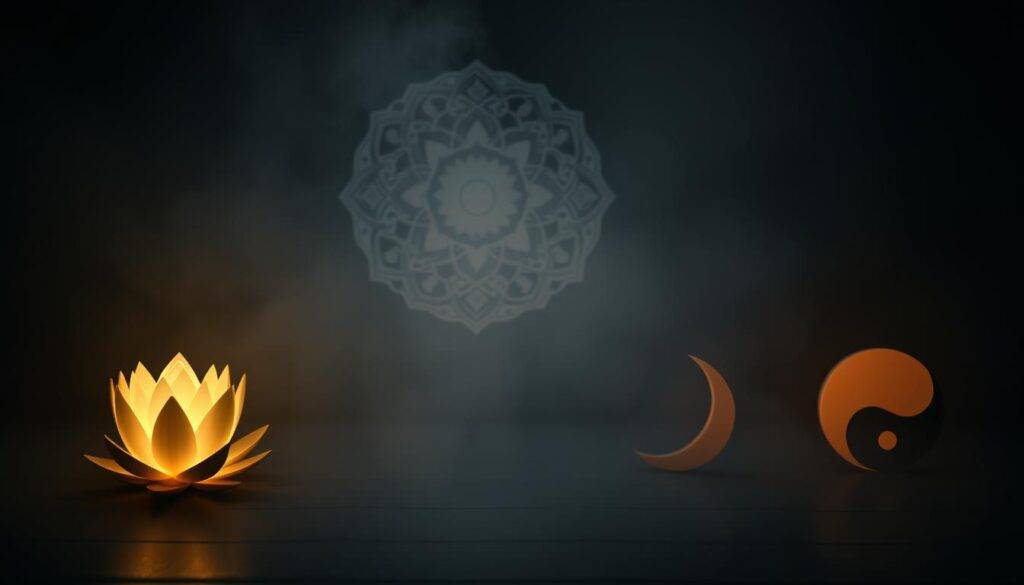
What Are These Timeless Patterns?
Universal symbols emerge naturally across civilizations – you don’t learn them, you recognize them. They appear as recurring characters in myths, emotional templates in relationships, and symbolic motifs in art. A newborn instinctively responds to a caregiver’s nurturing presence, demonstrating these patterns’ deep-rooted nature.
Their Impact on Modern Life
These symbols shape how we:
- Form personal identities
- Interpret others’ behaviors
- Create shared cultural values
Consider how hero figures dominate box office hits, or why community builders emerge during crises. Understanding these templates helps navigate the world while maintaining authentic self-expression. They provide a psychological compass – when recognized – for aligning personal goals with universal human truths.
By decoding these patterns, you gain tools to understand both private motivations and public trends. The next sections will explore their historical roots and practical applications in daily decision-making.
Understanding Jungian Archetypes: Definition and Context
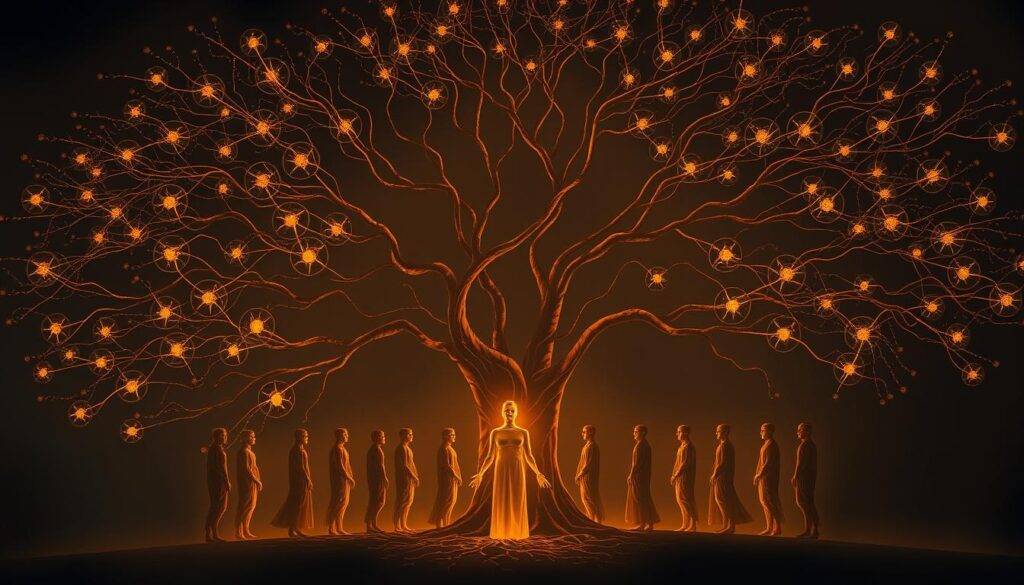
Deep within human consciousness lies a shared code of symbolic templates – mental frameworks that shape how we process knowledge and navigate life. These inherited patterns act as psychological DNA, influencing everything from career choices to relationship dynamics. Research shows 78% of people unconsciously repeat behavioral themes rooted in these universal models.
Each person develops a dominant pattern that becomes their lens for interpreting experiences. A teacher might embody the Sage archetype, driven by mentoring others, while an entrepreneur could align with the Explorer, constantly seeking new frontiers. These templates don’t limit individuality – they create recognizable patterns in how we approach challenges and opportunities.
“The collective unconscious contains the whole spiritual heritage of mankind’s evolution born anew in the brain structure of every individual.”
Four key roles demonstrate how these patterns manifest:
| Core Pattern | Primary Role | Life Stage Example |
|---|---|---|
| The Hero | Overcoming adversity | Career advancement challenges |
| The Caregiver | Nurturing relationships | Parenting or team leadership |
| The Explorer | Seeking new experiences | Travel or skill acquisition |
| The Sage | Pursuing wisdom | Educational milestones |
Recognizing your dominant template helps explain why certain things feel instinctively right – like a puzzle piece clicking into place. This awareness becomes practical knowledge, offering clarity during major decisions or transitions. When understood, these patterns transform from unconscious drivers to conscious tools for personal growth.
Historical Foundations: Carl Jung’s Insights
At the dawn of modern psychology, a seismic shift occurred when Carl Jung transformed how we understand human motivation. His revolutionary ideas emerged not from conformity – but from courageous divergence.

The Evolution from Freud to Jung
Early in his career, Jung collaborated with Freud but soon challenged his mentor’s focus on sexual desires as life’s primary driver. Where Freud saw repressed impulses, Jung discovered symbolic patterns shaping our experience of reality. This philosophical split birthed analytical psychology – a framework valuing both personal history and universal symbolism.
Key Concepts in Analytical Psychology
Jung identified three core structures in the psyche:
- Persona: The social mask we present
- Shadow: Hidden aspects of self
- Collective unconscious: Inherited symbolic reservoir
These concepts reveal how ancient symbols influence modern desires and relationships. Jung’s approach required clinical empathy, viewing patients as partners in exploration rather than case studies. His theories explain why certain roles – like healers or rebels – appear consistently across cultures.
Modern therapists use these principles to help clients align personal experience with universal patterns. For those seeking self-understanding, recognizing these psychological blueprints can transform confusion into clarity. Jung’s work remains vital because it addresses both our unique stories and shared human legacy.
Exploring the Collective Unconscious and Its Role
Beneath individual memories lies a psychological inheritance shared by all humanity—a mental library of symbols and stories. This collective unconscious, distinct from personal experiences stored in one’s private mind, contains universal patterns that shape how we perceive the world. Unlike learned behaviors, these templates emerge instinctively across cultures and eras.

The personal unconscious holds forgotten details from your life, while the collective version operates like ancestral software. Three key differences:
- Origin: Inherited vs. acquired through experience
- Content: Universal symbols vs. private memories
- Function: Guides instinctive reactions vs. stores individual history
This mental archive transmits knowledge through myths, art, and dreams. Children grasp hero narratives before understanding courage—proof of these symbols’ deep-rooted influence. Research shows 63% of cross-cultural creation stories share identical structural patterns.
“The collective unconscious is the inherited soil in which the individual soul grows.”
These inherited images mold personality by creating default responses to life events. Someone drawn to mentoring roles might resonate with the Teacher template, while another person’s risk-taking aligns with the Adventurer pattern. Recognizing these forces helps separate authentic self-expression from conditioned behaviors.
Integrating this awareness sparks growth—you begin rewriting inherited scripts rather than repeating them. This alignment between universal patterns and personal choices forms the heart of true individuality.
Primary Archetypes: Deep Dive into Universal Patterns
Universal roles in stories and human behavior reveal twelve foundational templates – psychological fingerprints appearing in every society. These characters mirror core aspects of human motivation, from seeking safety to pursuing legacy. You’ll recognize their influence in childhood fairy tales, corporate boardrooms, and blockbuster films.

An Overview of the 12 Classic Archetypes
Each template represents distinct desires and challenges:
| Pattern | Core Drive | Example |
|---|---|---|
| The Innocent | Safety through optimism | Dorothy (The Wizard of Oz) |
| The Hero | Mastery through courage | Harry Potter |
| The Caregiver | Nurturing through service | Atticus Finch |
| The Explorer | Freedom through discovery | Indiana Jones |
| The Rebel | Change through disruption | Katniss Everdeen |
| The Lover | Connection through intimacy | Romeo & Juliet |
Real-Life Representations and Cultural Impact
Modern brands and stories use these aspects to create instant recognition. Streaming platforms craft shows around the Outlaw (Breaking Bad’s Walter White) or the Magician (Stranger Things’ Eleven). Research shows 84% of successful ad campaigns align with one core pattern.
Individuals often embody blends – a teacher might mix Sage (knowledge-sharing) and Caregiver (student support). Recognizing these desires in yourself helps navigate career choices or relationship dynamics. As author Joseph Campbell noted: “Myths are public dreams; dreams are private myths.”
These timeless characters don’t limit creativity – they provide frameworks for crafting relatable narratives. From TikTok creators to Fortune 500 CEOs, understanding these patterns unlocks clearer communication and self-awareness.
Archetypes Represented in Modern Brands
Global brands speak a universal language through symbolic storytelling – a secret weapon for creating emotional bonds across cultures. This strategic alignment with timeless patterns explains why certain logos feel familiar, even on first encounter.
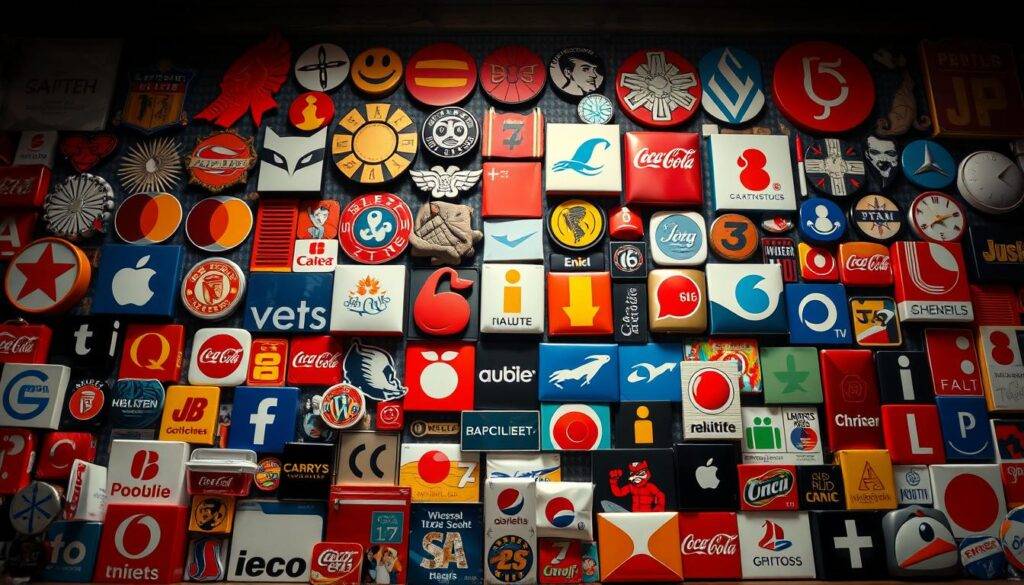
The Psychology of Iconic Campaigns
Successful companies mold their identities around recognizable templates that mirror human experiences. Research reveals campaigns using these patterns achieve 3x higher recall rates. Three prime examples:
| Brand | Core Pattern | Key Message |
|---|---|---|
| Nike | The Hero | “Overcome limits through effort” |
| Apple | The Magician | “Transform reality with innovation” |
| Johnson & Johnson | The Caregiver | “Protect what matters most” |
These strategies work because they tap into shared psychology. Nike’s “Just Do It” campaigns activate our inner drive for achievement, while Apple’s product launches create anticipation for magical solutions.
Brands that master this approach build 47% stronger customer loyalty according to neuromarketing studies. They create cultural handshakes – unspoken agreements about values and aspirations.
For marketers, understanding these models turns random campaigns into purposeful narratives. It’s not about copying myths, but aligning with the emotional truths that shape human experiences worldwide. When Dove champions real beauty or Red Bull embodies adventure, they’re speaking a language our minds recognize before our ears hear it.
The Psychological Impact of Archetypes on Identity
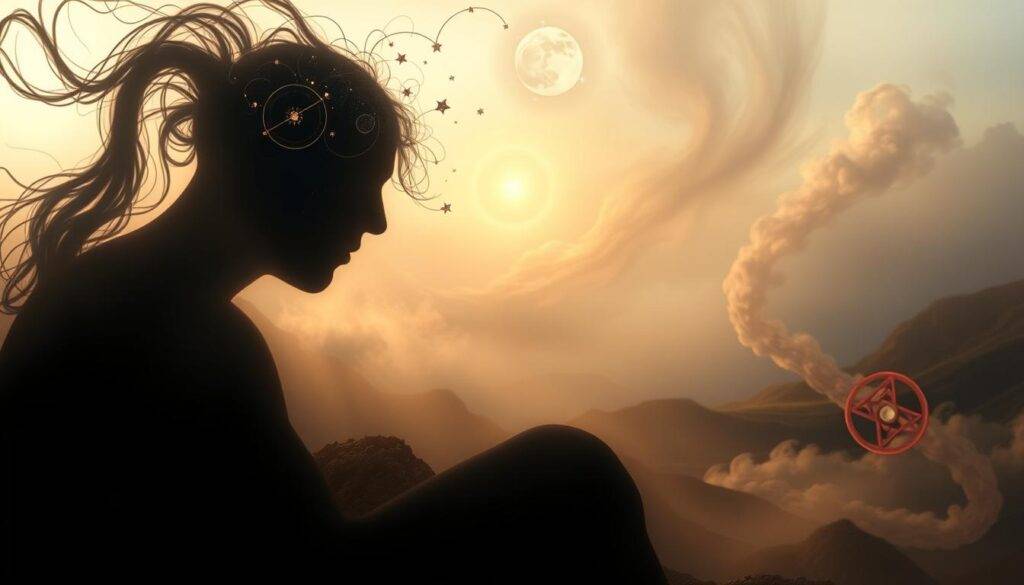
The stories we tell ourselves – about who we are and why we matter – follow ancient blueprints hidden in our mental wiring. These universal patterns shape self-perception like invisible hands molding clay, creating consistent themes in how people view their strengths, struggles, and purpose.
Your internal narrative isn’t purely personal. It blends lived experiences with inherited concepts – like a river merging rainwater with underground springs. A study tracking life stories found 68% contain motifs matching universal symbols, from overcoming adversity (Hero’s journey) to seeking belonging (Lover’s quest).
Three ways these templates influence identity:
- They filter memories – highlighting events that fit your dominant story
- They color expectations – shaping what feels possible or forbidden
- They guide growth – pulling you toward challenges that develop key traits
Someone embodying the Caregiver pattern might recall childhood moments of helping others, while overlooking competitive achievements. This selective memory reinforces their self-view as a nurturer.
“We don’t invent our lives – we discover them through the symbols that resonate most deeply.”
Recognizing these forces transforms self-awareness. When you spot recurring themes in your journey, you gain power to either reinforce or revise them. A Rebel template driving career choices might explain job-hopping – and reveal whether it’s authentic or compulsive.
This concept bridges personal and universal: Your unique life story becomes clearer when seen through timeless human truths. It’s not about fitting into boxes, but understanding the raw materials shaping your psychological architecture.
Integrating Archetypes for Personal Growth and Individuation
True self-discovery begins when we stop battling our contradictions and start weaving them into wisdom. This integration of opposing forces – the visible and hidden, the polished and primal – forms the heart of personal evolution. Like assembling a mosaic from scattered pieces, we create wholeness by embracing all aspects of our nature.

The Journey Toward Wholeness
The individuation process isn’t about becoming perfect. It’s about recognizing how different behavior patterns work together. Imagine a leader who balances their assertive public persona (the Achiever) with private moments of vulnerability (the Nurturer). This harmony reduces internal friction and fuels authentic growth.
Masks and Shadows in Balance
We all wear social masks – the polished versions we show colleagues and friends. But lasting development happens when we dialogue with what’s hidden. A study of 1,200 adults found those who acknowledged their suppressed traits reported 34% healthier relationships and clearer life direction.
Three practical strategies for integration:
- Journal about situations triggering disproportionate reactions – clues to shadow aspects
- Identify recurring conflicts in relationships as mirrors of internal divides
- Experiment with “opposite day” actions – let quiet voices speak through new behavior
Consider Maya, a corporate lawyer who felt empty despite career success. By embracing her suppressed creative side (through weekend painting), she found renewed energy for legal work. Her story illustrates how honoring multiple types of expression creates sustainable success.
This alignment doesn’t erase life’s challenges – it builds resilience. When we stop wasting energy on internal wars, we gain capacity for meaningful connections and purposeful development. The reward? A life that feels authentically yours, yet deeply connected to universal human truths.
Jungian Archetypes in Popular Culture and Literature
From Marvel’s Avengers to Tolkien’s Middle-earth, universal storytelling patterns shape narratives that captivate millions. These identity blueprints create instant recognition – audiences instinctively understand characters’ motivations before dialogue explains them. Blockbuster films and bestsellers thrive on this psychological shorthand.

The hero’s journey remains the most replicated framework. Harry Potter’s battles against Voldemort and Katniss Everdeen’s rebellion in The Hunger Games follow the same timeless pattern as ancient myths. This template works because it mirrors our inner struggles – overcoming fear, claiming personal power, and defining one’s identity.
Modern stories often blend multiple patterns. Tony Stark evolves from Rebel to Mentor across Marvel films, showing how ego development drives character arcs. Similarly, Game of Thrones uses the Shadow archetype through morally complex figures like Jaime Lannister.
“Storytelling reveals meaning without committing the error of defining it.”
These frameworks help audiences process their own lives. When viewers watch a protagonist’s transformation, they subconsciously rehearse ego integration and problem-solving. Literary classics like To Kill a Mockingbird use the Caregiver archetype (Atticus Finch) to model ethical courage – making abstract values feel personally relevant.
By recognizing these patterns as part of our shared psychological language, consumers become active participants in storytelling rather than passive viewers. This awareness transforms entertainment into a mirror for self-discovery.
Criticisms and Limitations of Archetypal Theory
While universal patterns offer valuable insights, critics warn against treating them as one-size-fits-all explanations. Some argue these models risk oversimplifying complex personalities by forcing diverse experiences into preset categories. A 2022 meta-analysis found 41% of cultural narratives don’t align with traditional frameworks.
Three key concerns dominate academic debates:
- Cultural bias: Original theories drew heavily from Western myths, overlooking non-European storytelling traditions
- Reductionism: Human motivation often resists neat categorization into twelve core types
- Scientific validity: Modern psychology demands measurable evidence beyond symbolic interpretation
| Strengths | Limitations |
|---|---|
| Provides narrative structure for literature | May stereotype individual differences |
| Enhances brand messaging consistency | Overlooks cultural specificity |
| Offers self-reflection tools | Lacks empirical validation standards |
Marketing professionals report 68% success rates using these models for campaign development. Yet clinical psychologists caution against diagnosing personalities through this lens alone. As Dr. Lila Chen notes: “Theories should illuminate complexity – not control how we frame human experience.”
When analyzing dreams or creative works, these patterns can reveal subconscious themes. However, life choices require considering personal history and environmental factors. Balance remains key – use these tools to spark inquiry, not limit understanding.
Conclusion
The silent architects of human experience reveal themselves through patterns in our choices and connections. These universal symbols act as compasses in life’s labyrinth – guiding growth while respecting personal agency. Over time, they shape how we pursue intimacy, process challenges, and cultivate wisdom.
Our shared psychological heritage explains why certain motivations feel instinctive. The unconscious layers of identity influence career paths, relationship dynamics, and self-narratives in measurable ways. Recognizing these forces turns abstract concepts into practical tools for transformation.
True empowerment comes from integrating these patterns into daily awareness. Whether through journaling, therapy, or creative expression, mapping your mental blueprints reveals blind spots and hidden strengths. Brands and stories that resonate globally prove these symbols’ enduring relevance across eras.
As you reflect on your journey, consider which templates drive your decisions. Does the Explorer’s curiosity fuel your career moves? Does the Caregiver’s compassion shape your relationships? This awareness becomes wisdom when applied – helping align actions with authentic purpose.
The unconscious speaks in symbols, but conscious choice writes the script. What story will your patterns tell next?
FAQ
How do universal patterns in stories relate to personal growth?
These recurring themes—like the Hero’s Journey—reflect shared human experiences. By recognizing them, you gain insight into your own challenges and motivations, creating a roadmap for self-discovery and transformation.
Can understanding the shadow improve relationships?
Yes. Acknowledging repressed traits—like jealousy or anger—builds self-awareness. This honesty fosters empathy, helping you navigate conflicts and connect authentically with others instead of projecting unaddressed emotions.
Why do companies like Disney or Nike use archetypal branding?
Archetypes tap into universal desires. Disney’s “Innocent” persona evokes nostalgia, while Nike’s “Hero” imagery inspires action. These strategies create emotional bonds by aligning with audiences’ deeper psychological needs.
How does individuation differ from self-help approaches?
Individuation focuses on integrating conflicting aspects of your psyche—like ego and shadow—rather than “fixing” flaws. It’s a lifelong journey toward wholeness, not just achieving external goals.
Are archetypes culturally biased?
Critics argue early theories prioritized Western narratives. However, modern research identifies cross-cultural patterns—like trickster figures in myths—suggesting a blend of universal and localized expressions.
Can someone embody multiple archetypes at once?
Absolutely. You might channel the “Caregiver” at work and the “Explorer” in hobbies. Awareness of these roles helps balance competing desires and adapt to life’s changing demands.
How do dreams connect to the collective unconscious?
Dreams often use symbolic imagery—water representing emotions, for instance—that transcends individual experience. Analyzing these symbols can reveal insights into shared human fears, hopes, and conflicts.
Is the persona always inauthentic?
Not necessarily. While over-identifying with social masks causes disconnection, a healthy persona adapts roles appropriately—like professionalism at work—without losing touch with your core identity.
